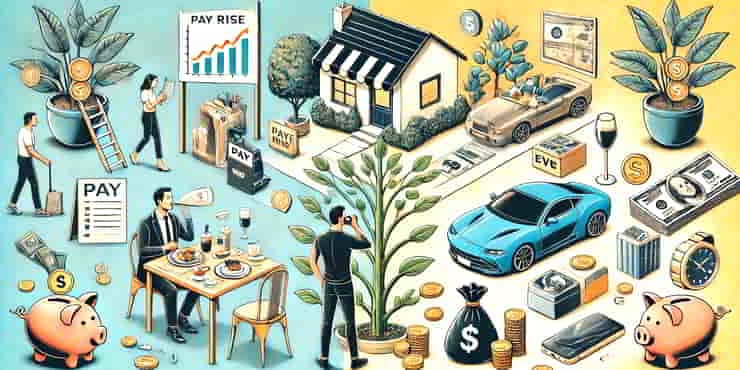Learning to Say No: Respect Your Time & Energy

Estimated reading time: 9 Min
“Yes” culture drains you. Learning to say no is about setting boundaries gracefully and reclaiming your time to focus on what really matters.
I’m going to kick things off by shedding light on why mastering the art of refusal is important.
This isn’t just about being difficult or uncooperative; it’s about prioritising your well-being and making choices that align with your values and capacities.
We often underestimate the power that a simple “no” carries in shaping our lives and relationships.
Now, there are plenty of misconceptions when it comes to saying “no.”
You might worry about coming off as rude, or you might fear missing out on opportunities.
But in my experience, learning to tactfully refuse is a game-changer.
I’m here to help you wade through these murky waters by deepening your understanding of refusal’s place in both your personal and professional spheres.
As we explore the power and significance of “no,” remember that you’re not alone in grappling with this.
Many struggle with the implications of turning down requests or opting out of commitments.
Realise that knowing when and how to say “no” can lead to reduced stress, improved relationships, and increased respect from others.
The Psychological Impact of “Yes”: Over-commitment and Stress
I’m going to kick things off with a truth you might find familiar.
Have you ever felt that twinge of anxiety when you’ve taken on just one too many things?
It’s a common experience, and it’s not without reason.
You see, we’re not just talking about a packed schedule when we discuss over-commitment; we’re talking about its sidekick, stress.
There’s a very real science behind the stress that comes with over-commitment.
When your mind realises that your to-do list outpaces your time, your brain kicks into high alert, pumping stress hormones that can take a toll on your health over time.
So what happens when you keep saying yes, even when you’re stretched thin?
Prolonged stress can lead to burnout, a state of mental, emotional, and often physical exhaustion.
The World Health Organisation (WHO) recognises burnout as an occupational phenomenon.
Think about it; even machines overheat and need downtime.
Humans are no different.
When you don’t set personal boundaries by saying “no,” every area of your life can suffer.
Your work, relationships, and personal growth all take a hit when you’re burned out.
Now, don’t worry too much about finding yourself in these situations from time to time.
It’s about recognising the pattern and understanding the cost of not setting personal boundaries.
Saying “no” isn’t just about keeping your calendar open; it’s about maintaining your sanity, your health, and your future well-being.
When you start seeing “no” as a tool rather than a rejection, you begin to reclaim the power over your life that you may not have realised you’d given away.
Empowerment through Rejection: Learning to Say No as a Tool

I’m going to show you how saying “no” isn’t just about turning down requests; it’s a powerful tool for personal empowerment.
It’s about taking control of your life and making decisions that benefit your well-being.
There’s a significant amount of freedom that comes from being able to set clear boundaries.
It isn’t just beneficial; it’s necessary for maintaining a sense of self-respect.
Building self-confidence is an unintended yet welcome side effect of learning to assertively refuse things that don’t serve your best interest.
The more you practice this, the more you recognise your worth and value your time.
It isn’t about being defiant; it’s about honouring your needs and recognising that you have the right to prioritise them.
This shift isn’t limited to the personal sphere.
Asserting your “no” can lead to professional development and respect from colleagues who see you as valuing your contributions and time.
I’ve seen real-life examples where a well-placed “no” led to increased trust and responsibility, simply because it demonstrated clear judgement and self-awareness. and that’s going to include instances where people found themselves more respected for declining overwhelming tasks.
In my opinion, once you start seeing the positive outcomes of saying no, it becomes easier to make it an integral part of your decision-making process, and this methodical approach to refusal sets the stage for strategic decision-making, which we’re going to explore next.
Strategic Refusal: When Saying “No” Can Lead to Better Opportunities
I’m going to let you in on a little secret: sometimes the most strategic answer you can give is “no.”
It might sound counterintuitive, but refusal can open doors to better opportunities.
This isn’t just about avoiding over-commitment; it’s also about aligning with your true priorities and making room for growth.
You’re going to find out about identifying situations where a decisive “no” can actually be your ticket to something better.
When every instinct tells you an opportunity is off-track for your goals, saying “no” keeps you focused and ready for the right one.
Always choose something that aligns with you and your core values.
This is the bedrock of strategic refusal.
The key is to recognise when an offer aligns with your goals and when it doesn’t.
If a project doesn’t fit with your long-term objectives, saying “no” can free you up for one that does.
Don’t worry too much about missing out.
In fact, “fear of missing out” (FOMO) can lead to yeses that you later regret.
When you say “no”, you might just be making the best decision for your career or personal life.
Now, I’ve seen this play out in real-life scenarios where professionals turned down promotions that weren’t right for them, only to be offered more suitable roles later on.
Their well-considered decisions actually showcased their strategic thinking and self-awareness to their employers.
In my opinion, it’s essential to anticipate and prepare for the reactions to your refusal.
Not everyone will understand your “no” right away.
But remember, the strategic “no” isn’t an impulsive one; it’s calculated and mindful of future potential.
Crafting Your “No”: Considerate and Constructive Refusal

Now, here’s a little secret: “no” doesn’t have to come off as rude or uncooperative.
In fact, with a little finesse, you can turn a denial into a constructive stepping stone.
That’s where the art of considerate and constructive refusal comes into play.
You’re going to find out how to say “no” in a way that sustains and even enhances relationships, whether they’re personal or professional.
It all starts with being both tactful and honest.
Choose something that resonates with you and the situation.
Maybe it’s a simple.
“I’m honoured by the offer, but I can’t commit to that right now,” or a transparent “I really don’t have the necessary resources at the moment.”
The key is to communicate your refusal clearly without leaving room for misinterpretation.
Balancing kindness with firmness is crucial.
Don’t worry too much about the immediate reaction; your goal is to set boundaries respectfully.
This isn’t just about avoiding over-commitment; it’s also about cultivating respect.
Phrases like “While I can’t take on the full project, I can consult on parts of it” or “I appreciate your request, but I’m focusing on my current commitments” can soften the blow.
It’s all about offering a glimpse of your rationale without oversharing.
Next, let’s bridge this concept to how you handle more delicate situations, like those involving friends or family.
It’s important to stay consistent with your approach to refusal.
In the next section, I’ll be guiding you through the ramifications of saying “no” in your personal life, because sometimes the toughest “no” is the one closest to home.
The Impact of “No” on Personal Relationships
You’re going to find out how the simple act of saying “no” can shift the dynamics of your personal relationships.
Often, we’re afraid that refusal might offend friends and family, but the truth is, the way you say “no” can actually strengthen these bonds.
In my opinion, setting healthy boundaries is fundamental.
When you clearly define your limits, it encourages respect and understanding between you and your loved ones.
It also teaches others that your time and needs are valuable.
Dealing with pushbacks is part of the process.
Not everyone will be thrilled with your refusal at first, and that’s okay.
But don’t worry too much about it.
The key is consistency and communication.
Over time, those who truly value you will honour your decisions.
It’s a delicate balance, maintaining harmony while sticking to your guns.
Choose something that resonates with you; maybe start small—rejecting an invitation to an event or asking for space.
Remember, your well-being matters, and your real friends will see that.
This isn’t just about saying “no”; it’s also about opening the door for more honest and fulfilling relationships.
When you’re transparent about your capacity and desires, you leave little room for misunderstanding and resentment.
Refusal at the Workplace: Asserting Professional Boundaries
I’m going to show you how saying “no” at work isn’t just about self-preservation; it’s about professionalism.
When you’re feeling overwhelmed, it’s crucial to communicate that effectively, so let’s explore what it looks like.
Saying “no” to unrealistic deadlines and excessive workloads isn’t just about pushing back; it’s a conversation about what’s realistic and sustainable for you and your team.
It’s about finding a balance based on where you can do your best work.
You’re going to find out about how to communicate boundaries to managers and colleagues.
This includes the language to use and the timing of your refusal to ensure your message is received in the way it’s intended.
Maintaining a professional demeanour is key when you refuse additional responsibilities.
This isn’t simply turning down tasks; it’s a strategic choice to focus on the quality of your work rather than the quantity.
Don’t worry too much about the immediate reaction—focus on the long-term respect you will gain by setting clear and rational boundaries.
You can always adjust your approach down the road, but you’ll never regret establishing a foundation of honesty and boundaries in your professional life.
Summary
I’m here to help you solidify your “no” so it becomes second nature.
Choosing something that fits you is key.
Your first attempt doesn’t need to be your last; practice is what builds confidence.
If you want to maintain your new empowered stance, consistency is essential.
Start small if you need to, and don’t worry too much about stumbling at first. Each time you say “no”, you’re reinforcing your personal boundaries and sense of self-worth.
You can always adjust your approach down the road, but the main goal is to develop a comfortable and consistent way of declining requests.
Remember, your time and energy are finite resources that deserve careful allocation.
Saying “no” might be a challenge initially, but it’s a challenge worth embracing for the sake of your overall well-being and happiness.
Finally, I really hope that you take away from this the understanding that saying “no” is a powerful skill—it’s not only about self-preservation but also about making room for the “yes” you truly believe in.
Will you take up the challenge?
Let me know how you get along by sharing your experience through comments or the contact form. Remember to share.
🙂
Richard






